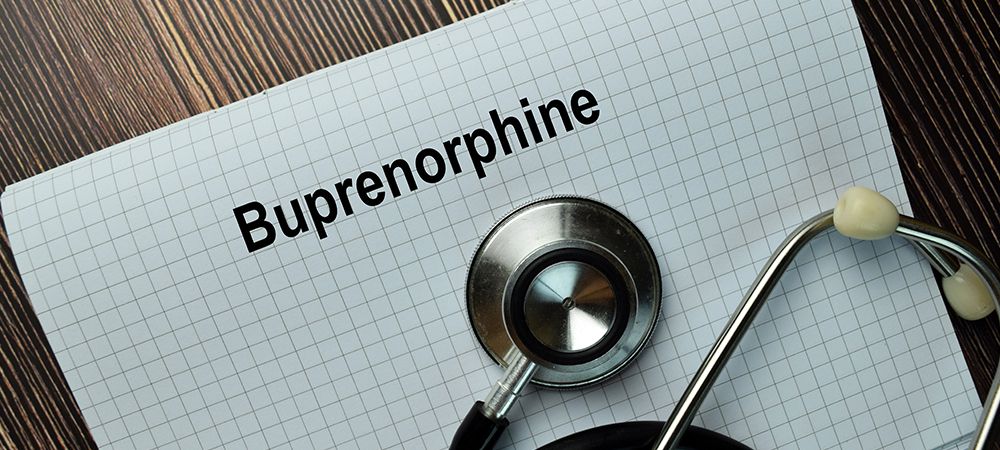It’s only normal to want answers to what happens during detox before signing up for treatment. The detox process is the first step in drug and alcohol addiction treatment. The detox process involves several assessments that will vary from mental to physical tests.
The essence of detox is to reduce the amount of drugs or alcohol in your system. In the process of flushing out these substances in your system, you may experience some withdrawal symptoms.
Withdrawal symptoms can be mild, severe or even lethal if handled poorly. Hence, it’s important to undergo detox in a controlled environment.
This is just an overview of what happens during detox. As we proceed in this article, we shall extensively look at treatment methods to expect, the possibility of withdrawal symptoms and the timeline of the average detox program.
What is Detox?
Detox is the first form of treatment during a drug or alcohol addiction treatment. It involves removing alcohol or a drug substance from an addict’s system before proceeding to treatment.
Addiction is a slow process that takes months or even years to attain. In the first stage of addiction, addicts take a drug for the excitement or relaxation it offers. Slowly, these drugs start shutting natural ways to incite excitement in individuals.
With time, the body neglects its natural ways of feeling pleasure and relief. At this point, the body will only produce “excitement” hormones only in the presence of that drug. It’s a situation we describe as your body being dependent on the substance.
Just after dependence is tolerance; at tolerance, your body will require higher doses of the drug to produce the initial effect of excitement. If this continues, you’ll become an addict in no time.
Because addicts often abuse drugs or alcohol, there’s usually a buildup of toxins and drug concentrates in the body. The essence of the detox process is to flush out these drugs and toxins in your system to quicken recovery.
That said, it’s important to know when to begin detox and who needs to undergo detox. Below is a highlight of pointers for a detox process.
Who needs detox?
Drug and alcohol addiction affects every part of your body. However, vital body organs often take the brunt of it. One of the major organs that alcohol or drug addiction affects is the liver.
The liver is responsible for drug detoxification and alcohol metabolism. A severe drug or alcohol habit will only overwork the liver. This is why most alcohol addicts suffer from liver failure in their late phase of addiction.
Medical detox and a comprehensive addiction program are the only methods to prevent this level of organ damage. Other key indicators that you or a loved one needs detox include:
Addiction symptoms
Often, friends or loved ones are the first to notice addiction symptoms, way before addicts start noticing them. One of the common signs of addiction is the addict’s dependence on the substance.
Several times, only close friends or relatives can tell about one’s dependence on alcohol. It’s why we often advise people to look out for comments by loved ones on their substance use.
Stress and exhaustion

Certain drugs are known to give users “highness” on usage. These types of drugs are used by people who want to ease stress or want to relax. One of the disadvantages of using such drugs is their inability to sustain “highness”.
Consequently, users become stressed and exhausted after prolonged usage. Constant stress and exhaustion are common symptoms that show that an addict needs to undergo detox.
Sore joints and muscles
Another common way to tell if you’re due for detox is if you feel sore in your joints or muscles. Often, sore joints and muscles are due to inflammation in these areas due to toxins.
Inflammation is your body’s natural response to injuries, diseases and illnesses. Since alcohol or drug addiction predisposes you to disease, it’s most likely your muscles, and joints get inflamed.
If you experience aches and pains during the day, it’s a sign that there’s inflammation in your joints. Also, it’s a sign you need a detox program.
Digestion issues
Alcohol as a substance inhibits digestion in the gut. With indigestion, you may start feeling stomach pain, diarrhea and bloatedness. In some cases, addicts can suffer from frequent vomiting and congestion.
Seeing the discomfort that comes with drug and alcohol addiction, you must undergo detox. Otherwise, your health may deteriorate over time.
Skin issues
Alcohol aids the build-up of toxins in the body and underneath the skin. If there’s an overload, the liver won’t efficiently detoxify these toxins.
Hence, they’ll initiate some skin problems like eczema and acne. This explains why patients with severe addiction cases suffer from itchy skin and acne.
Related Article: How Do You Neutralize Drugs in Your Body?
Detox Process: What Happens During Detox?
Different individuals react differently to procedures in a detox process. Some people react mildly, while others react badly. What happens during detox depends on the severity of the addiction.
The challenging part of a detox procedure is the withdrawal symptoms that patients experience. Medical detox programs usually have stand-by staff ready to act on impulse.
Commonly, people don’t know what happens during a detox process. The activities of a detox process exceed the removal of drugs from the body. Below, we give a clear insight into what to expect during a detox process.
Medical assessment
The medical assessment is the first step in any detox. On arrival at a detox centre, staff collect information about you. They’ll do a blood test to check the level of the substance and toxins in your system. They’ll ask for histories of addiction to see where you fall.
All of these are to create a personalized detox plan for you. While creating a detox plan for you, specialists will taper treatment to your unique needs to aid recovery. It’s worthy of mention that medical assessment aims to check your mental and physical wellness for treatment.
Withdrawal symptoms
Withdrawal symptoms during detox are due to your body’s adjustment to reduced levels of drugs or alcohol. During addiction, your body starts to function solely on the substance. With detox, it suddenly has to do without the substance m.
Your body tries to compensate for this adjustment. The adjustments are the withdrawal symptoms you experience.
Withdrawal symptoms during detox can be mild or severe. They can also b physical or psychological. If there are no professionals available, withdrawal symptoms can be life-threatening. It’s why we often advise individuals not to undergo detox at home and without expert help.
Seeing the severity of withdrawal symptoms, we must highlight them.
Physical withdrawal symptoms

- Runny nose
- High temperature and chills
- Headaches
- Vivid and unpleasant dreams
- Shaking and shivering
- Increased heart rate
- Sweating
- Increased blood pressure
- Abdominal cramps
- Muscle and bone pain
- Exhaustion
- Nausea, diarrhea and vomiting
Psychological withdrawal Symptoms
- Intense cravings for the substance
- Confusion
- Anxiety
- Irritability
- Inability to concentrate
- Insomnia
- Agitation
- Paranoia
- Extreme mood swings
- Depression
However, in some cases, withdrawal symptoms can be very severe. Most especially when the addict is experiencing:
- Seizure
- Hallucination
- Delirium
Medication Treatment
There are two ways professionals reduce drugs in the body. First, they taper your drug use to re-adjust your body system. Or they use medications that attach to drug substances, then excrete them.
Concerning medications, there is no one-size-fits-all kind of medication during detox. However, some drugs help to ease symptoms and provide adequate sleep during the process. Some medications to expect during a detox program include:
Suboxone
Suboxone is an opiate that is used to treat other opioid addictions. It’s a combination of buprenorphine and an opioid agonist, naloxone. Both of these components work in hand to ensure a safe detox process.
The reason doctors use suboxone during the detox treatment program is because of its long half-life. The buprenorphine component of the drug binds to receptor sites in the brain, leaving no binding sites for opioids.
Because of their long half-life, they cause an accumulation of circulating opioid substances in the blood. Then your kidney excretes these circulating substances.
Suboxone can be very addictive hence its naloxone component. Naloxone helps to counter the effect of the buprenorphine, making the drug less addictive.
Valium
Valium, the brand name for diazepam, belongs to the benzodiazepine family and is used to treat a variety of conditions. Doctors use valium to treat panic disorders, anxiety and alcohol addiction.
Valium is important in treating alcohol addiction because of its long half-life. Just like buprenorphine, valium attaches to receptor sites in the brain, decreasing alcohol cravings by addicts.
Its effects on cravings are why, clinically, the drug is used to taper out alcohol addiction.
Also, doctors use valium to treat muscle spasms and seizures which are associated with alcohol withdrawal symptoms. In a detox procedure, doctors monitor patients to prevent addictive behaviours with valium.
Buprenorphine

Depression and anxiety are some of the withdrawal symptoms of drug addiction. Buprenorphine is useful in treating these withdrawal symptoms.
If using buprenorphine to treat addiction, doctors advise its usage a week or two before quitting. By this, there is a build-up of the substance in the body to prevent withdrawal symptoms. After this, patients take the medication for seven weeks to six months to attain full sobriety.
It’s important to mention that medication-assisted detox is step-by-step. It means doctors taper the medications on a step-wise basis depending on the patient’s response.
How Long Does the Detox Process Take?
The length of a detox procedure is largely dependent on several factors. Some of these factors are:
- Severity of addiction
- History of addiction.
- Patient’s physical make up
- Type of drug abused
- Length of addiction.
Generally, the withdrawal timeline takes around 24 hours to 10 days. Here is a breakdown of the detox process timeline.
- Alcohol withdrawal takes between 24 hours to as long as two weeks.
- Heroin addiction lasts several weeks.
- Prescription painkillers addiction lasts for several weeks.
- Nicotine withdrawal lasts for a few days.
Related Article: What is the Timeline for Drug Detox?
To Wrap It Up
What happens during detox ranges from an assessment step to the administration of medication under strict monitoring.
One critical thing to expect during a detox process is withdrawal symptoms. Withdrawal symptoms are the hurdle of detox processes. Hence, you must undergo detox in a supervised environment. In a supervised environment, professionals are available to manage whatever situation may occur to prevent casualties.
Here at Medical Detox Ontario, we offer comprehensive detox programs in high-level facilities. Our specialists will devise a detox treatment plan that works for you based on your unique needs. Get in touch with us today!

